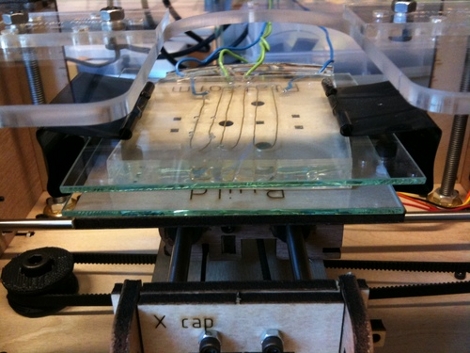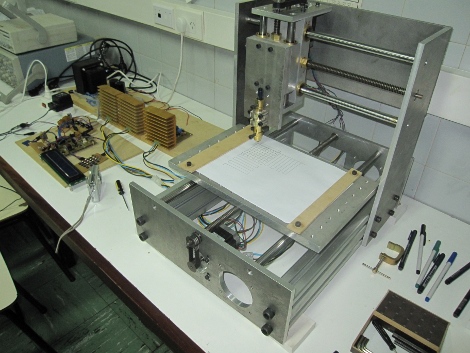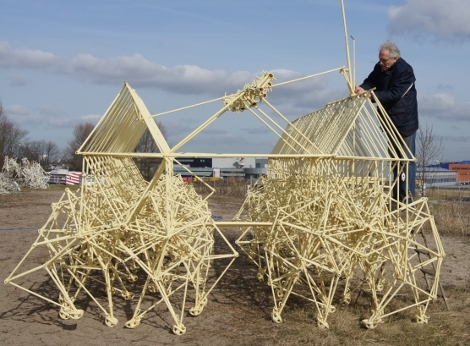
This heated build stage seeks to make 3D printing with the MakerBot a little easier. When hot ABS or PLA meet the cold, cruel world they have a tendency to warp. This was concern for [Devlin Thyne] when he was developing our Hackaday badges. What you see above is 10 Ohm nichrome embedded in clear silicone, then sandwiched in between two plates of glass. The device is made to interface with the MakerBot and includes a thermister for temperature sensing. With a small firmware upgrade you can now set the build stage temperature which should make larger printed objects a bit easier to deal with. A while back we saw a hotbed for the RepRap, but this implementation should be cheaper and easier for the smaller MakerBot applications.
















